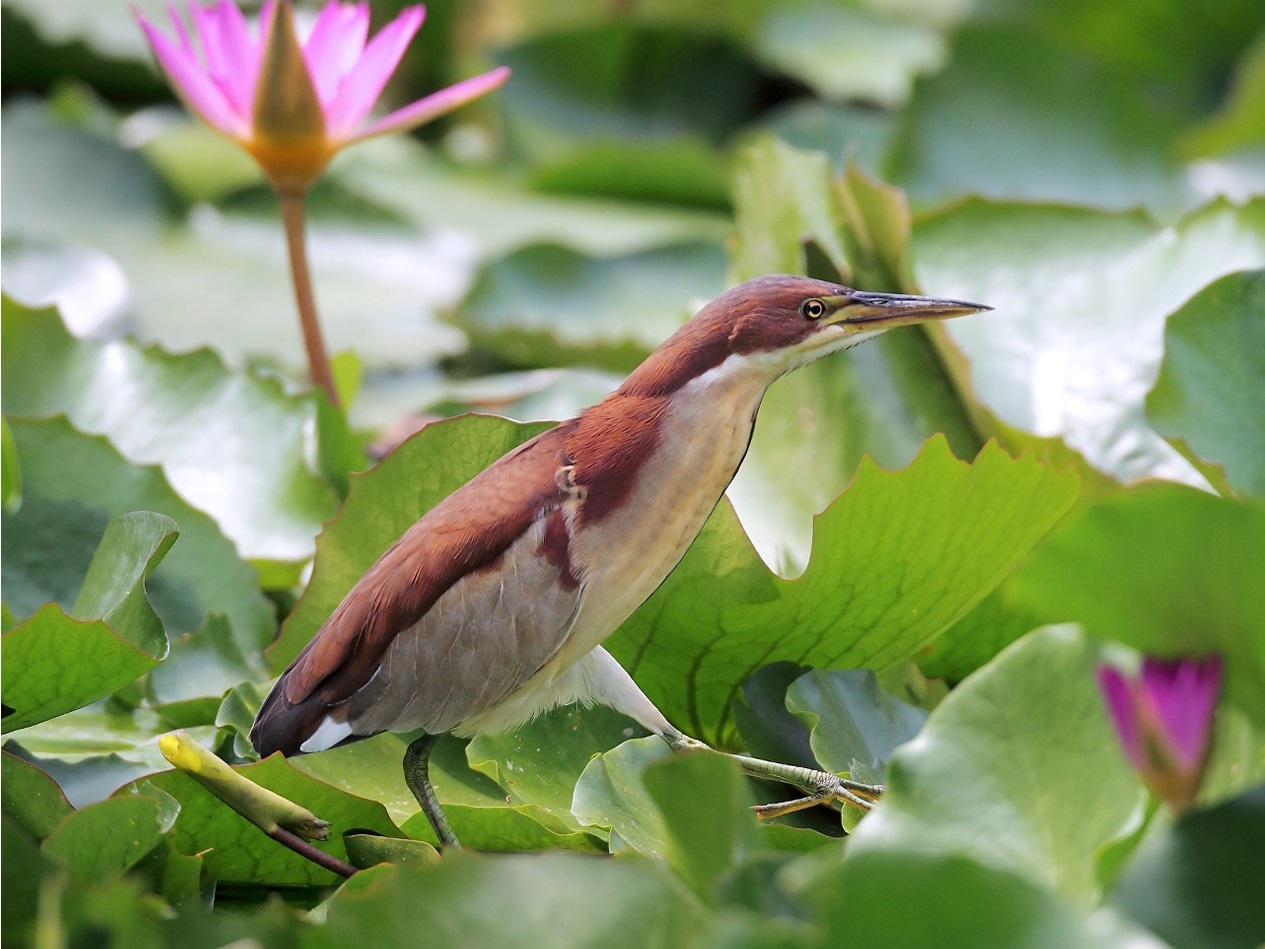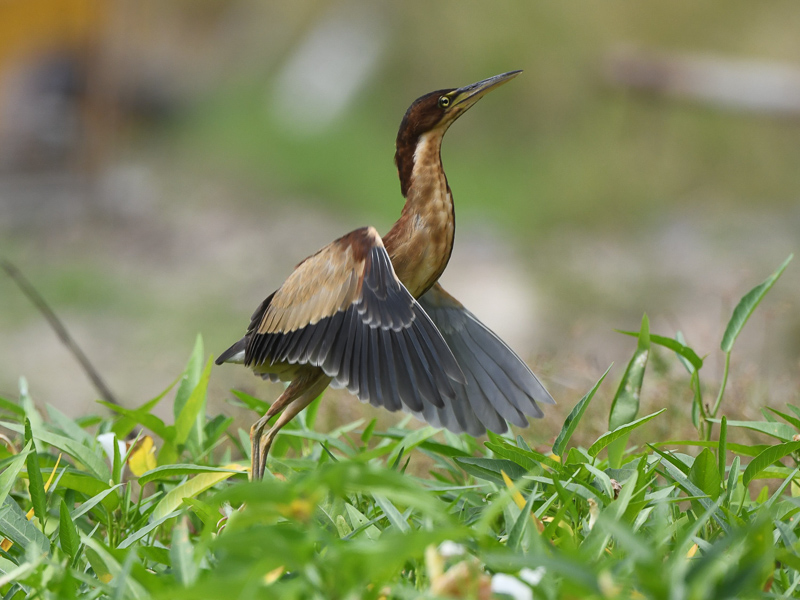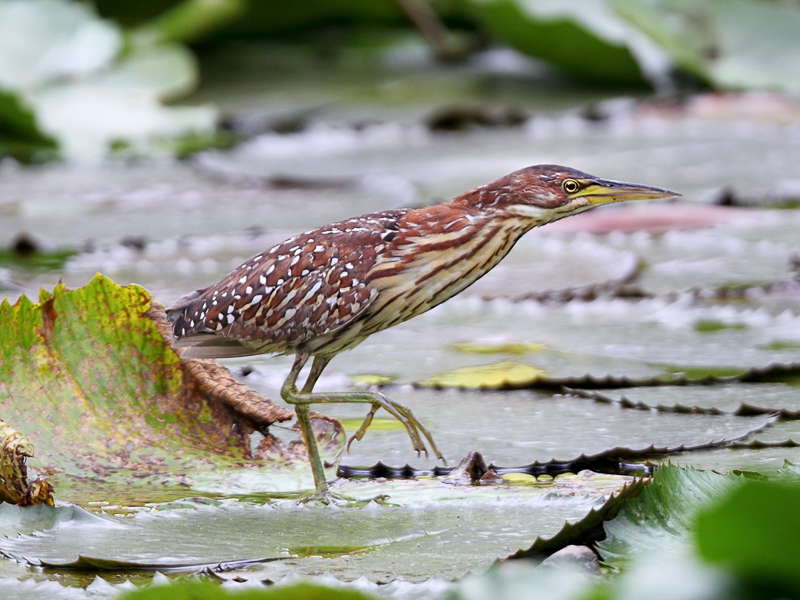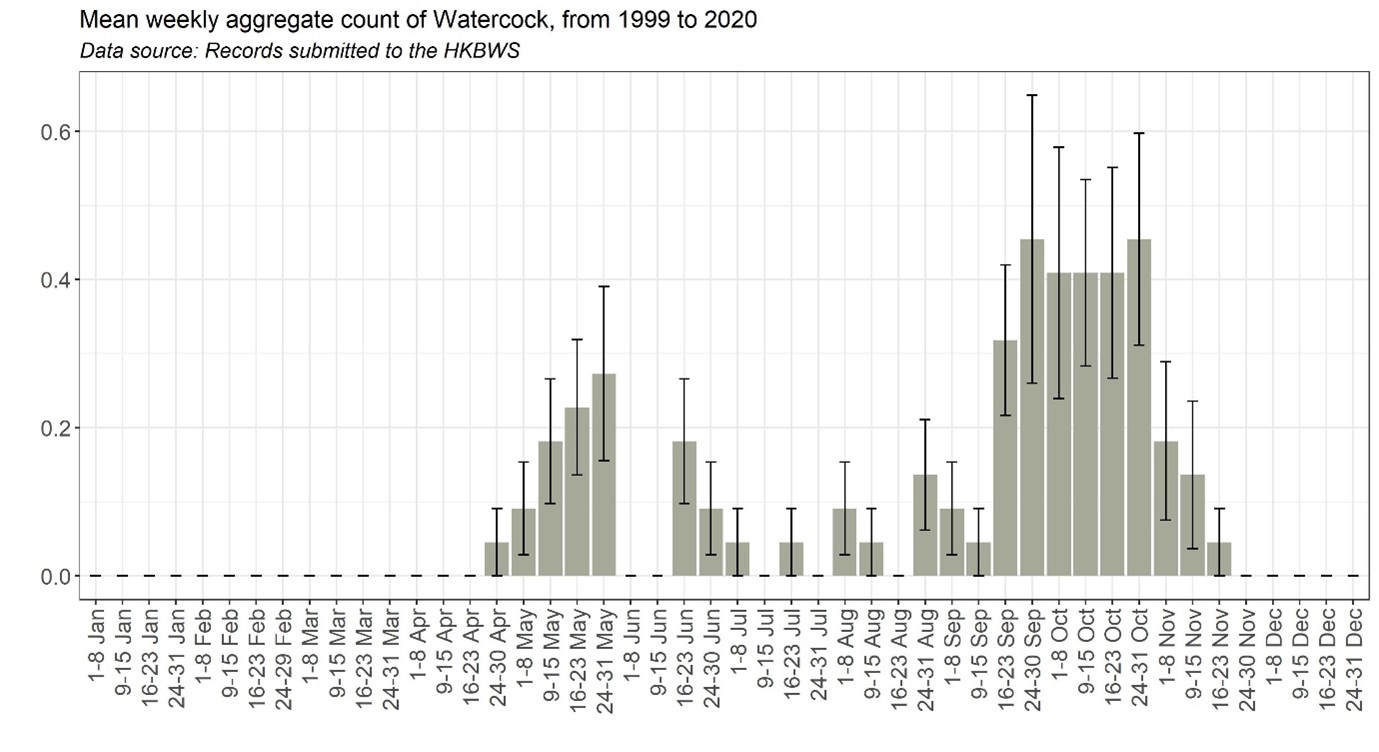Von Schrenck’s Bittern Ixobrychus eurhythmus 紫背葦鳽
Category I. Passage migrant, scarce in spring and rare in autumn, to freshwater wetland areas, migrant sites and wet wooded areas.
IDENTIFICATION

May 2010, Michelle and Peter Wong. Adult male.
33-42 cm. Identification is discussed in Leader (1996). The largest of the three small bitterns occurring in HK, though this is usually apparent only in flight; bill is more deeply-based and more dagger-like than that of Yellow Bittern (but similar to Chestnut Bittern). Adult male has plain rich chestnut upperparts.

Oct. 2020, Graham Talbot. Adult male.
Adult male has largely uniform silvery-grey underwing, buff underparts and sandy inner wing coverts contrasting with dark flight feathers.

May 2012, Michelle and Peter Wong. Adult female.
Female/immature has dark chestnut upperparts with extensive pale spotting on mantle and inner wing coverts, creamy underparts with blackish gular stripe and dark streaks on side of neck (forming dark lines down throat on adult female), blackish tail, whitish tips to primary coverts and dark flight feathers.
VOCALISATIONS
Call is described as a ‘low gruff ‘wek’ in flight’ (Brazil 2018).
DISTRIBUTION & HABITAT PREFERENCE
Migrant Schrenck’s Bitterns are encountered at widespread locations though most records occur at freshwater marshy areas such as the wet agricultural fields at Long Valley or freshwater ponds at Mai Po NR. Migrants are regularly encountered on Po Toi, and there are records of flocks over or arriving from sea areas. Of the three small bitterns in HK, it is most likely to be recorded in wooded habitats.
OCCURRENCE
The pattern of occurrence is illustrated in Figure 1. Spring passage is generally apparent in May and the first week of June, with main passage period around the middle of May. Extreme dates are 21 April 2013 and 5 June in 1995 and 2008. The. The peak count is 29 on 21 May 2008 on Po Toi, including a flock of 22 arriving off the sea.
Autumn passage is much less obvious than that in spring. The earliest records occurred on 29 August in 1995 and 1999, and the peak of passage occurs from the last week of September to the middle of October. Interestingly, since 1999 a second minor peak has occurred in the final three weeks of November. Numbers are lower than spring, most records being of singles, or occasionally two birds.
BEHAVIOUR, FORAGING & DIET
Of the three small bitterns occurring in HK, appears most likely to be recorded in flocks over the sea and most likely to occur in wooded habitats.
RANGE & SYSTEMATICS
Monotypic. Breeds south China as far northeast as southeast Siberia and Ussuriland and south to South Korea and the northern half of Japan; winters in Yunnan and Hainan in southwest China, the Philippines, southern Malaysia and the Greater Sundas (Martínez-Vilalta et al. 2020, Liu and Chen 2020).
CONSERVATION STATUS
IUCN: Least Concern. Population trend decreasing (estimated at not more than 17,000).
Figure 1.

Brazil, M. (2018). Birds of Japan. Helm, London.
Leader, P. J. (1996). Field identification of Yellow, Schrenck’s and Chestnut Bitterns. Hong Kong Bird Report 1995: 218-223.
Liu, Y. and Y. H. Chen (eds) (2020). The CNG Field Guide to the Birds of China (in Chinese). Hunan Science and Technology Publication House, Changsha.
Martínez-Vilalta, A., A. Motis, G. M. Kirwan, and A. Bonan (2020). Schrenck's Bittern (Ixobrychus eurhythmus), version 1.0. In Birds of the World (J. del Hoyo, A. Elliott, J. Sargatal, D. A. Christie, and E. de Juana, Editors). Cornell Lab of Ornithology, Ithaca, NY, USA. https://doi.org/10.2173/bow.schbit1.01

